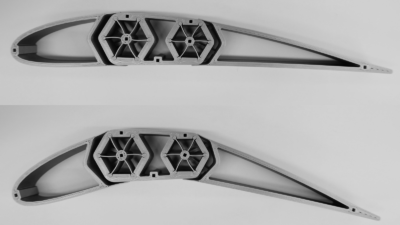Progress on motion cueing, flutter suppression
By Sunjoo Advani, Jeffrey Schroeder, and Edward Burnett|December 2016
The Modeling and Simulation Technical Committee focuses on simulation of atmospheric and spaceflight conditions to train crews and support design and development of aerospace systems.
Loss-of-control incidents have sharpened the focus on pilot training techniques and tools, including motion cueing in flight simulation. While standards for motion platform hardware testing have existed for decades, industry has struggled with objective measures to quantify motion cueing, which is dominated by software.
The new Objective Motion Cueing Test, or OMCT, standardizes testing of both hardware and software. It was included in International Civil Aviation Organization Manual 9625 in the fall of 2014, as well as in an update to FAA simulator regulations in the spring. The OMCT was evaluated and refined by surveying 10 operational training simulators. Overall, the OMCT helped the simulator manufacturers verify or fine-tune the simulator motion cueing characteristics.
One simulator manufacturer claimed the test yielded significant improvements to their simulators and a better understanding of motion cueing issues. In the next step, the OMCT needs to be redefined for rotorcraft simulation.
The FAA has also been investigating motion cueing in pilot training to provide guidance to training operators on simulation fidelity requirements necessary to comply with new pilot training regulations. To this end, the FAA conducted a study in the NASA Ames Research Center’s Vertical Motion Simulator, or VMS, in California. Sixty-one general aviation pilots trained on four challenging commercial transport tasks under different motion conditions that included typical hexapod motion. The pilots repeated the tasks with large-amplitude VMS motion to assess training effectiveness of the different motion conditions. New objective motion criteria, based on the OMCT, guided the selection of the simulated hexapod motion conditions.
The results indicated that the motion condition used in training affected touchdown position, stall recovery technique, pilot opinion, maximum load factor obtained, and reaction time. The results also suggested the new objective motion criteria may offer standardization benefits, as improvements in the motion fidelity, predicted by the criteria, correlated with improvements in pilot opinion and objective performance measures.
In April, the FAA qualified the first flight simulator, a B737-800, for use in full stall recovery training at Alaska Airlines. This simulator was updated with a new aerodynamic model developed by Bihrle Applied Research of Virginia, which included an evaluation by a test pilot with hundreds of full stalls in the same aircraft. In July, the FAA qualified a second B737 simulator at Southwest Airlines for full stall training that had an updated aerodynamic model developed by Boeing. This update incorporated data collected during the aircraft certification program but not included in the original simulator model, as full stall training was not required previously in simulation.
Lockheed Martin Skunk Works, the Air Force Research Laboratory and NASA continued to work on active flutter suppression controls for Lockheed’s X-56A aircraft. Simulation models of the vehicle were correlated with data from the first phase of flight testing in 2013. New model formulations that better represent the flexible aerodynamics and structural dynamics were developed using flight data. These new modeling techniques are an important step in the development of structural mode control that will allow for more efficient aircraft designs. These new technologies will make future flight simulation training devices more representative of the aircraft. The X-56A team is also discussing certification requirements with the FAA for future civil aircraft experiencing active flutter suppression. ★



































